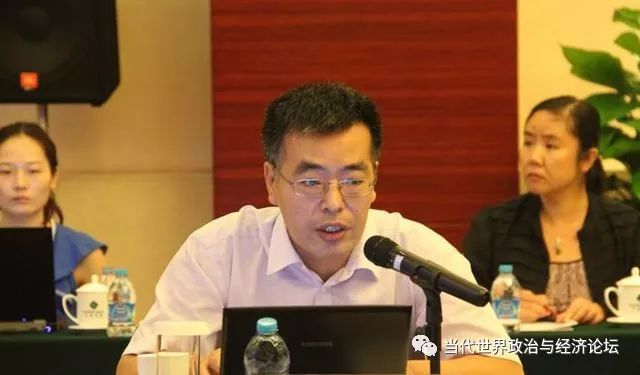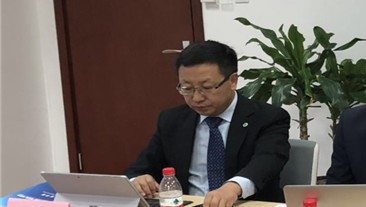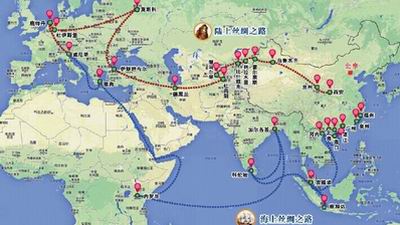美国为维持其国际地位,在全球实施技术霸凌主义,目的就是要垄断关键和核心技术,这是一种过时的、有违人类命运共同体理念的模式,理应由新的合作模式加以代替。我国可优先通过加强与非洲国家在公共卫生系统上利用新技术、新模式、新业态、开展公共卫生系统的新基建合作,建立国家间技术和创新援助的典范,发挥示范效应;积极支持企业参与此领域的合作,为企业开展创新国际合作营造良好的环境。我国各地可以依托自由贸易试验区、自由贸易港、综合保税区等政策平台,打造境内关外的创新创业环境,探索国际创新合作模式。在企业国际化过程中,我国可以支持一批有实力的企业拓展海外商业网络,借助这些网络融入全球创新体系,与此同时,在境内设立连接全球创新网络的平台和在海外设立创新驿站,借此吸收海外先进的知识、技术和能力,从而形成相对稳定的国际技术转移通道。在中美经贸摩擦加剧的情形下,我国应该大力鼓励各类创新主体积极开拓国际创新合作空间,支持企业在海外设立研发中心,加强与国外高水平大学、科研机构和科技企业合作建立联合实验室。为了促进“走出去”和“引进来”双向发力,我国也要鼓励各地引进世界顶尖的研究型大学和跨国科技公司到境内设立研发机构、创新中心、科技服务机构等,同时配套建立国际技术转移中心和产业孵化基地,吸引科技成果境内转化。国际化专业人才集聚有利于促进创新。鉴于此,我国也应着力改变国际化创新人才占比偏低和国际化环境优势不明显的状况,鼓励创新型城市试点简化科技人才入境申办工作签证手续、海外人才个人所得税减免和基本公共服务国民待遇,大力引进世界科技人才。
参考文献
[1]Pakes, A., & Griliches, Z. Patents and R&D at the Firm Level: A first Report[J].Economics Letters,1980,5,(4):377-381.
[2]Kaihua Chen, & Jiancheng Guan. Mapping the Functionality of Chinas Regional Innovation Systems: A Structural Approach[J].China Economic Review,2011,(22):11-27.
[3]Fujita, M., & Thisse, J. F. Economics of Agglomeration: Cities, Industrial Location, and Regional Growth[M]. New York: Cambridge University Press,2002.
[4]Acs, Z. J., & Varga, A. Introduction to the Special Issue on Regional Innovation Systems[J]. International Regional Science Review,2002,25,(1):3-7.
[5]Romer, P. M. Endogenous Technological Change[J]. Journal of Political Economy,1990,98,(5):71-102.
[6]Krugman, P. Geography and Trade[M]. Cambridge, MA: MIT Press,1991.
[7]Nelson, R. R. National Innovation Systems a Comparative Analysis[M]. New York and Oxford: Oxford University Press,1993.
[8]崔新健,郭子枫,刘轶芳.基于知识管理的区域创新能力评价研究[J].北京:经济管理,2013,(10):38-47.
[9]马双,曾刚.网络视角下中国十大城市群区域创新模式研究[J].北京:地理科学,2019,(6):905-911.
[10]Lundvall, B. A. National Systems of Innovation: Towards a Theory of Innovation and Interactive Learning[M]. London:Pinter,1992.
[11]Nelson, R. R. National Innovation Systems a Comparative Analysis[M]. New York and Oxford: Oxford University Press,1993.
[12]Maskell, P., and Malmberg, A. The Competitiveness of Firms and Regions: “Ubiquitification” and the Importance of Localized Learning[J]. European Urban and Regional Studies,1999,6,(1):9-25.
[13]Chaminade, C. Are Knowledge Bases Enough? A Comparative Study of the Geography of Knowledge Sources in China(Great Beijing)and India(Pune)[J]. European Planning Studies,2011,19,(7):1357-1373.
[14]Plum, O., & Hassink, R. Comparing Knowledge Networking in Different Knowledge Bases in Germany[J]. Papers in Regional Science,2011,90,(2):355-371.
[15]Tödtling, F., Grillitsch, M., & Höglinger, C. Knowledge Sourcing and Innovation in Austrian ICT Companies—How Does Geography Matter?[J]. Industry and Innovation,2012,19,(4):327-348.
[16]Martin, R., & Moodysson, J. Comparing Knowledge Bases on the Geography and Organization of Knowledge Sourcing in the Regional Innovation System of Scania, Sweden[J]. European Urban and Regional Studies,2013,20,(2):170-187.
[17]Granovetter, M. The Impact of Social Structure on Economic Outcomes[J]. Journal of Economic Perspectives,2005,19,(1):33-50.
[18]Agrawal, A., Cockburn, I. & McHale. J. Gone but not Forgotten: Knowledge Flows, Labor Mobility, and Enduring Social Relationships[J]. Journal of Economic Geography,2006,(5):571-591.









